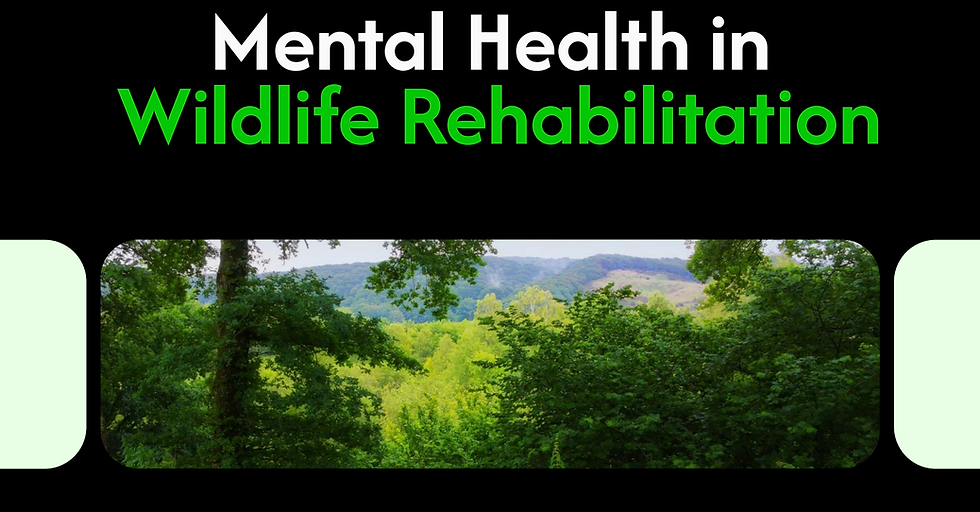Why Focusing on a Single Bird Species is Essential for Sustainable Avian Rehabilitation
- WReNNZ

- Aug 14
- 3 min read

Introduction
Are you passionate about making a difference in the lives of wild birds? You're not alone. Countless people around the world share this passion and choose to channel it into avian rehabilitation careers. But with hundreds of bird species potentially needing help, where do you begin?
While it may seem logical to help every bird that crosses your path, successful avian rehabilitation requires a more focused approach. In this post, we'll explore why specialising in single bird species is crucial for creating sustainable, effective rehabilitation practices that truly make a lasting impact.
Why Specialisation Matters in Avian Rehabilitation
Avian rehabilitation is a complex field that demands deep expertise to be effective. When rehabilitators try to treat all bird species, they often spread their resources too thin, leading to suboptimal outcomes for the birds in their care.
Specialising in a single bird species offers several key advantages:
Deeper Knowledge Leads to Better Care: Understanding one bird species intimately means you'll recognise subtle behavioural cues, flight patterns, feeding behaviours, and health indicators that generalists might miss. This expertise translates into faster, more accurate diagnoses and more effective treatment plans.
Improved Efficiency: With focused knowledge comes efficiency. You'll develop streamlined protocols specific to your chosen species, allowing you to treat more birds in less time while maintaining high-quality care.
Higher Success Rates: Better understanding and more efficient treatment lead to improved outcomes. More birds successfully return to the wild with proper flight capabilities and natural behaviours intact, which is the ultimate goal of rehabilitation.

Strategic Partnerships: Specialisation makes it easier to build meaningful relationships with ornithologists, avian veterinarians, and bird conservation organisations focused on your species. These partnerships can provide invaluable resources, expertise, and support.
Resource Optimisation: Rather than maintaining flight enclosures and supplies for dozens of species, you can invest in specialised aviaries, species-specific diets, and equipment that serve your focus species better.
How to Select Your Bird Species of Focus
Choosing your avian specialisation requires careful consideration of several factors:
Local Bird Population Assessment: Research which bird species are most commonly brought to rehabilitators in your area. Common candidates could include songbirds (tui, silvereyes), raptors (hawks, owls), waterfowl (ducks, geese), or seabirds (gulls, penguins), depending on your location. Focusing on a frequently encountered species ensures steady experience and community support.
Habitat Space Requirements: Consider the habitat enclosures each species requires. Raptors need large flight pens for conditioning, while songbirds need smaller, densely planted aviaries. Waterfowl and seabirds require pools and specialised aquatic setups. Choose a species whose habitat requirements match your available space.

Research Species-Specific Challenges: Each bird species presents unique rehabilitation challenges. Thoroughly research your potential specialisation to understand feeding requirements (moving prey vs. seeds vs. fish), moulting cycles, migration timing, territorial behaviours, and release protocols.
Build Your Avian Network: Connect with established bird rehabilitators, avian veterinarians, ornithologists, and bird conservation organisations in your area. Their insights can help guide your decision and provide crucial support once you begin.
Building a Sustainable Practice
Resource Management: Maximise donations through efficient systems and bulk purchasing of species-specific supplies such as specialised bird food, flight enclosures, and perching materials.
Community Engagement: Build support through education programs about local bird species and volunteer opportunities. Engaged communities provide both funding and volunteer assistance.
Balanced Approach: Quality care is better than quantity. Successfully rehabilitating fewer birds with proper habitat conditioning is more effective than becoming overwhelmed and providing substandard care that results in birds that cannot survive in the wild.
Ongoing Development: Stay current through avian rehabilitation conferences, workshops with ornithologists, and networking with other bird rehabilitators.
Conclusion
Specialising in avian rehabilitation creates a more meaningful impact than trying to help all bird species. Focused expertise leads to better care, higher success rates, and stronger conservation partnerships.
The path requires dedication and planning, but the rewards are significant. You'll save individual birds while contributing to broader conservation efforts that benefit entire bird populations and ecosystems.
If you're committed to bird conservation, take time to research and specialise. Your expertise will make you a more effective advocate, creating lasting benefits for avian wildlife.
Article Written By
Mandy Robertson – Retired Rehabilitator












Comments